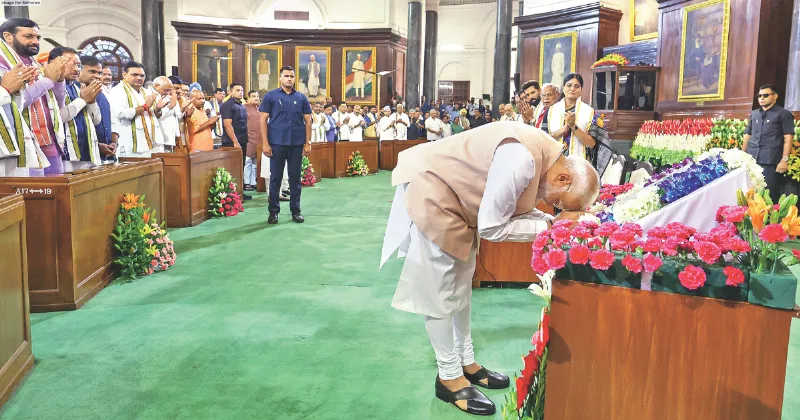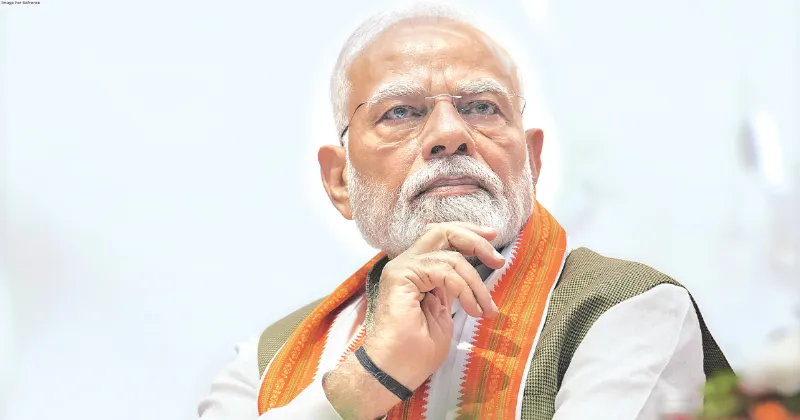Latest News
Narendra Modi-led Coalition Government’s First Budget

The lengthy two-month election process has resulted in the formation of India’s 18th Lok Sabha. Once again, Prime Minister Narendra Modi has taken over the reins of power. All eyes will be on the National Democratic Alliance (NDA) government, or the Modi government 3.0, when they release the Union Budget today. Speculations abound on whether the upcoming budget will once again bear the unilateral imprint of PM Modi’s leadership or reflect the pressure politics of the coalition government. However, the general consensus is that the Modi government will certainly try to accelerate the path of India’s economic development through the budget, which it has established over the past ten years.
Through the budget, governments attempt to propose the country’s economic development for the entire fiscal year using various data. Its impact is profound, as the budget serves as a roadmap that the government must follow to run the country’s economy. Over the past two to three decades, India’s economy has undergone significant changes, and today India undoubtedly holds a strong image on the global stage. In this era of globalization, the unwavering economic opportunities for India persist, partly because India is the most populous country in the world. However, on the domestic front, unemployment remains a persistent issue. Despite this, India’s consistently growing economic growth rate continues to attract global attention and keeps the world on alert.
Credit undoubtedly goes to the Modi government for its leadership, under which the Indian economy has rapidly progressed on the GDP scale, securing the fifth position in the global race. Major global economic institutions and rating agencies foresee the Indian economy reaching the $7 trillion mark in the coming years, surpassing Japan and Germany. Currently, however, the Indian economy is just close to $4 trillion.A brief analysis of the economic policies of Modi government 1.0 and 2.0 reveals a strong focus and positive stance on capital expenditures. During the final phase of the Manmohan Singh government, about 12 percent of the budget was allocated to capital expenditures, whereas the Modi government rapidly increased this allocation to over 22 percent. In the fiscal year 2023- 24, actual spending on infrastructure development was 18.6 percent, with the remaining 3.6 percent being the percentage of funds allocated as financial loans to various states and public enterprises. This focus on capital expenditure led to a boost in the economy and a continuous increase in private investment, resulting in rapid GDP growth.
On the other hand, it is also a reality that from October to December 2023, 45 percent of youths aged 20 to 24, who can be considered graduates, were unemployed in India. Among those aged 25 to 29, the number was 14 percent. The Modi government did not secure an absolute majority in the 2024 general elections, and one of the main reasons for this was that young people perceived unemployment as an economic failure during Modi’s ten-year tenure.
In the current Indian economy, there is an established mindset that the private sector expects a lot from the government before investing, such as tax concessions and financial facilities. However, the Indian economy is no longer in the era of the 90s, where the whims of the private sector were highly anticipated; times have changed significantly. Nevertheless, it is clear from several recent budgets that governments are constantly trying to attract the private sector. This focus often diverts the government’s full attention from rural economies, small consumers, the savings of ordinary people, higher interest rates on banking investments, and the rising inflation in everyday goods. It seems peculiar and irrational when attempts are made to explain through statistics that changes in income tax rates or thresholds directly affect only one or two percent of India’s population. Many analysts try to clarify the government’s stance on this issue, arguing that changes in income tax rates do not benefit the lower strata of society significantly while reducing the government’s revenue.On the other hand, the GST rate on commonly consumed goods typically ranges between 12 and 18 percent, which financially burdens the common person. For instance, dining at a restaurant incurs both state and central GST, increasing the meal bill for about five people by over 20 percent.
The upcoming union budget is likely to reflect Prime Minister Modi’s earlier statement comparing freebies to “distributing sweets,” or it may no longer seem rational in the current context. Given that the current government is a coalition and some states within this coalition have upcoming elections, regional parties will likely advocate for freebies as essential for social and backward class development. Therefore, how the government plans this budget, especially with demands from some states for special status, will be a key point of interest. The budget will need to balance these expectations while addressing the broader economic goals and fiscal discipline, making it a significant test for the coalition government.
THE VIEWS EXPRESSED BY THE AUTHOR ARE PERSONAL
Dr PS Vohra The author is columnist and financial thinker






















